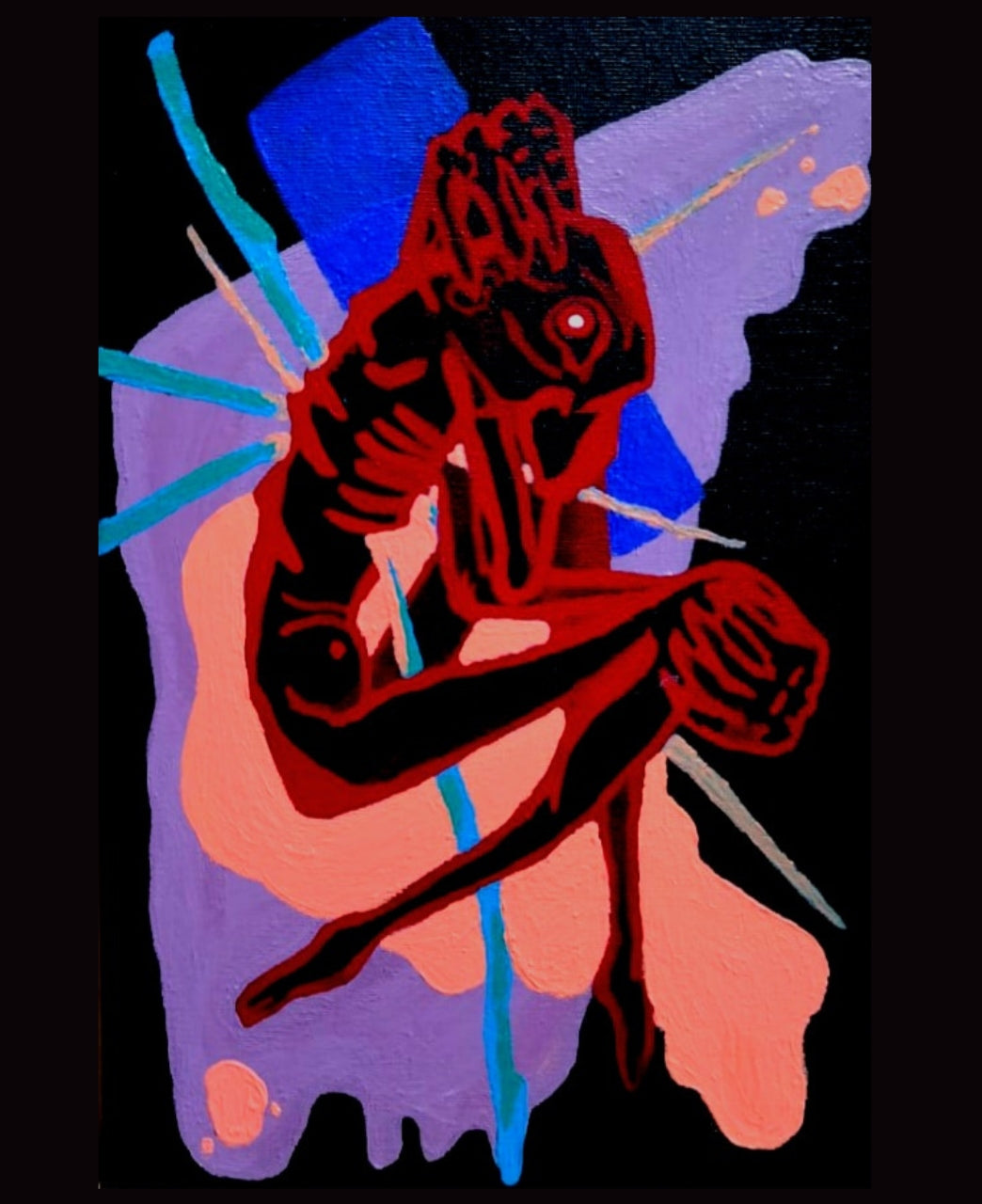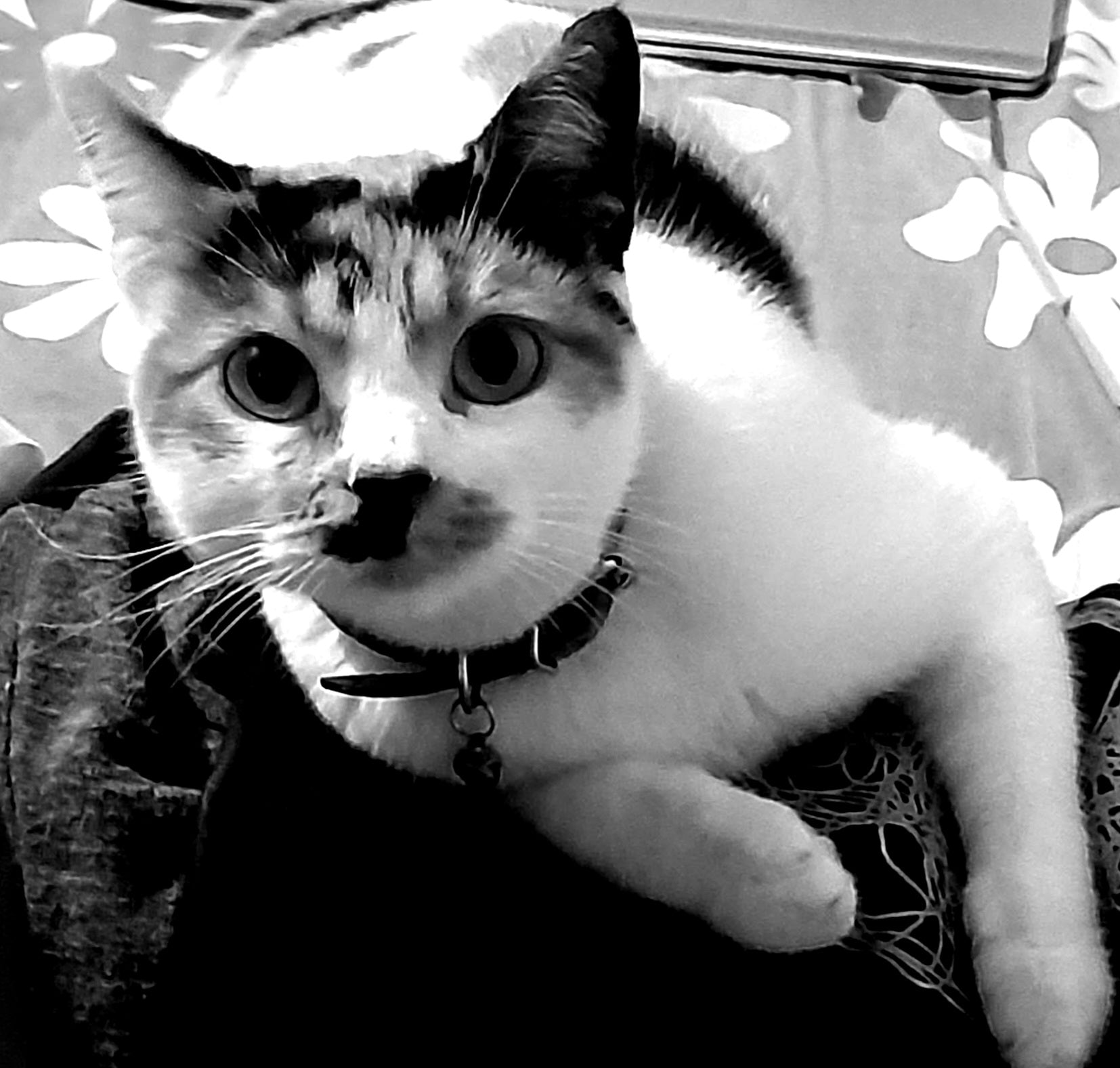Insomnia
Insomnia
By Théreza E. Zgheib
In Artworks
Couldn't load pickup availability
Stock level: 1 left
Item details:
▸ Features: Handmade Unique Piece▸ Materials: Canvas
▸ Art technique: Acrylic Painting
▸ Dimensions (cm): 20.0 x 15.0 x 2.0
▸ Net Weight (kg): 1.0
According to the Embodied Realities exhibition's curator, Dr. Pamela Chrabieh, "Insomnia" is a visceral exploration of the embodied experience of sleeplessness, where the boundaries between the physical and psychological dissolve into a restless, contorted form. The figure, rendered in bold, almost skeletal lines, appears trapped within its own body, its posture conveying tension, exhaustion, and an inescapable inner turmoil. The striking contrast of colors, from deep reds to electrifying blues and muted pastels, evokes the chaotic, disorienting state of wakefulness when the mind refuses to yield to rest.
"Insomnia" captures the weight of existence in a body that resists stillness. It speaks to the struggle of embodiment in a world that demands both presence and resilience, forcing the viewer to confront their moments of vulnerability and unrest. This piece resonates with the exhibition's broader theme: how the body is not just a vessel but a battleground of experience, emotion, and survival.
Production year: 2024.

About Théreza E. Zgheib

Théreza E. Zgheib is a 21-year-old artist on the autism spectrum, living independently near her university with her two cats. Entirely self-taught, she has been drawing and painting for over a decade, though she has long been reluctant to share her work. After experiencing the dehumanizing nature of corporate jobs, she realized she would rather create meaningful art than contribute to a system that thrives on empty advertising. Her goal is to produce work that demands presence and contemplation rather than something passively consumed in a social media feed.
Working primarily with acrylic on canvas, Zgheib explores themes of disconnection, bodily alienation, and the unsettling experience of being a spectator in one’s own life. Her work captures the horror of existence in a decaying body—one that feels more like an ill-fitting costume than a home. She draws inspiration from psychedelic rock, bones found in the woods, religious iconography, nightmares, the voices in her mind, her cats, and above all, pomegranates—objects she collects and keeps close for their strange sense of comfort.
For Zgheib, this exhibition is more than an opportunity to display her work—it is a search for kindred spirits. She seeks those who see beyond social performance, those who don’t attend funerals out of obligation but because they cannot bear to let someone grieve alone. No matter the space offered, even a small wall near the bathroom, she is simply grateful for the chance to be seen.

